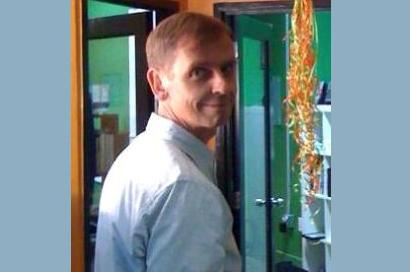The Need for Calm Technologies - Uwe Hook

2012 was supposed to be the year of stalking apps for the hyper-networking types: Glancee, Highlight, Banjo -- you name it. Once we arrived at SXSW, we would use these platforms to meet new people, find new connections. A funny thing happened.
Nobody cared.
Besides the usual technology cheerleaders, most SXSW participants just shrugged their shoulders and moved on. It's pretty apparent, these are total duds. The technology and philosophy behind many of these apps is sound as the concept of implicit social graphs tied to explicit graphs through background location is indeed an interesting idea. Yet, they fail because they don't solve any problem.
Foursquare and Gowalla (and gazillion other forgotten platforms) were the hot startups a few years ago that dominated the conversation when it came to social location, focused on the check-in model. Foursquare, the winner of the first location-based arms race, with its check-ins plus deals, tips, photos and to-do lists is mildy useful. It's good for events like SXSW where you want to connect with people in your graph. It's a reactive app.
The next generation of location apps will be about ambient location: You could be planning on going to one place and see that your friends are at another and go there instead. The app could pull you to a different place than your original destination. Ambient location apps will have amazing data sets: Better location and social models based on location awareness mixed with the data created by such interaction theoretically could have a profound affect on user behavior. In addition, brands and retailers could find this information useful as well.
It's clear that Glancee, Highlight and Banjo did not crack the code of background location data. (Delete, delete, delete.)
The difference between noisy and calm technology
You click on a button on your iPhone and it immediately bursts into life, the blinking "slide to unlock" label hinting at the direction of the motion it wants you to make. That rich, lively screen just begs for your attention. Add to that the layer of notifications and you have no willpower left to resist. No matter what's happening around you: a kid wanting to play with you, a book waiting to be read, a view that wants to be soaked in – once the iPhone wakes up, everything else in the room disappears; your attention's been stolen by that burst of light. The iPhone (and the iPad, for that matter) is a needy, attention-craving siren that will enslave your attention by its amazing beauty at the expense of the world around you. It's a temptress that constantly reminds you: "You could be on Twitter now" or "You could engage with your friends on Facebook now."
The Dopamine release
When you check your information, when you get a buzz in your pocket, when you get a ring – you get what they call a dopamine squirt. You get this little rush of adrenaline and, most of the time, you are disappointed. Sure, you get this little information nuggets, the location of your friends, the links they share, the inconsequential email but it's doesn't satisfy your craving for more. But when you don't get this little alarms, you feel bored, you want that little excitement. You're being conditioned by technology to check, check, check and check.
Information is like food. It nourishes us and we need it to survive in the 21st technology, to be a productive citizen. Yet, food has positives and negatives. As Fast Food Nation clearly showcased, a steady diet of fast food won't lead to any good. Actually, it might lead to your quick demise. While we know to distinguish between Twinkies and Muesli, we still have trouble distinguishing between information red meat and information red grain.
The diminishing returns of noisy technology
Over time, we have created our information foundation: Email, Facebook, Twitter, Messageboards, Foursquare and other platforms that solve problems for each individual. We don't have a lot of attention left in our life to add more information and platforms. Apps and destinations became more noisy to get our attention. Just like a gathering that started out as a small dinner party, developed into a party with loud music and now looks like this:

(Talking about Dopamine.) You can enjoy a rave for a few hours, maybe even all night and a nice sunrise. But it's not a sustainable model. We can't continue to add new technologies and new platforms, begging us for information constantly without hitting the wall. I would argue, we've already reached that wall and we're about to hit it.
Nobody is saying noisy technologies will disappear. It's just too intriguing and easy to blink, flash and beep to get the attention of people. But the returns are diminishing and people are starting to look for technologies that solve problems with out being a needy temptress.
The future is now
Remember the Jetsons? The idea that robots and machines would do all the work for you while you can enjoy your life? Walking around the grounds of SXSW, one begins to think that something went awfully wrong. The machines are not here to serve us anymore, we're serving and working for the machines. We've become slaves to the machines. The obsessive trap of compulsive loop systems like Email and Twitter keeps us busy engaging with the machines while we spend less time engaging with real-life humans.
Noisy technology has made us less human, less focused, less engaged with real people, problems and challenges.
Calm technology will get out of the way, let us live our lives as humans, unobstructed by technology and the need to push buttons all day. With calm technology, actions become buttons; invisible interfaces trigger interactions. Calm technology is just there, it works but it doesn't require you to be glued to a device.
Just imagine: You geofenced multiple locations that you pass by each and every day. (Geofencing enables your actions to serve as buttons by creating persistent background locations that quietly track your every move.) While you leave the house, all unnecessary electronic items and lights will be switched off immediately. Since your work is only 10 minutes away, the geofence triggers the coffee machine to start up at your office and the computer to be turned on and ready for your arrival. (This example comes from Amber Case's keynote at SXSW.)
It gets much deeper than that.
Imagine a device that records everything you do. It registers all the music you listen to, tracks each and every moment, knows who you interacted with, records when you work out and how intense, tracks your sleeping patterns, your food consumption, the quality of air you breathe – basically it tracks anything you do and encounter.
You already have that device in the palm of your hand most of the day. All above sounds a bit creepy because you're afraid to share the information with a third party. What are they going to do with that data? Increase your health insurance premium because you stopped at a burger joint once a week, didn't work out enough and lived in smoggy conditions for 60 days a year? The scenario loses its creepiness when third parties don't have access to it because you own the data. You control who has access to it.
How valuable would it be for your physicians to be able to access all your health data and provide you with better remedies to improve your health?
How fascinating would it be to explore your real-life social graph and encounters, the ones that's tracked by your smartphone?
What amazing insights could we gather from all of our consumption habits and how to change them over time?
The majority of the data is already being collected. We don't have access to it, private vertical silos do. Once we take real ownership of this data, we can really put that data to use. Currently, we create all this data to get incrementally more relevant advertising. Nice to have but nothing that changes my life dramatically. What will change lives is gathering this data in the background and putting it to important use: Health, Work, Entertainment, Education – you name it. That's the revolutionary idea of VRM.
The future is not about being chained to the machines, feeding their insatiable appetite for data. The future is about integrating technology to improve lives, making our world a better place. That was always the idea, wasn't it?
Uwe Hook is the CEO and Co-Founder of BatesHook, Inc. (www.bateshook.com) and a veteran of the advertising and marketing industry with the goal of building connections between people and brands. Uwe can be reached at uwe@bateshook.com.
Read all Uwe's MediaBizBloggers commentaries at Subversions.
Check us out on Facebook at MediaBizBloggers.com
Follow our Twitter updates @MediaBizBlogger
The opinions and points of view expressed in this commentary are exclusively the views of the author and do not necessarily represent the views of MediaBizBloggers.com management or associated bloggers. MediaBizBloggers is an open thought leadership platform and readers may share their comments and opinions in response to all commentaries.


